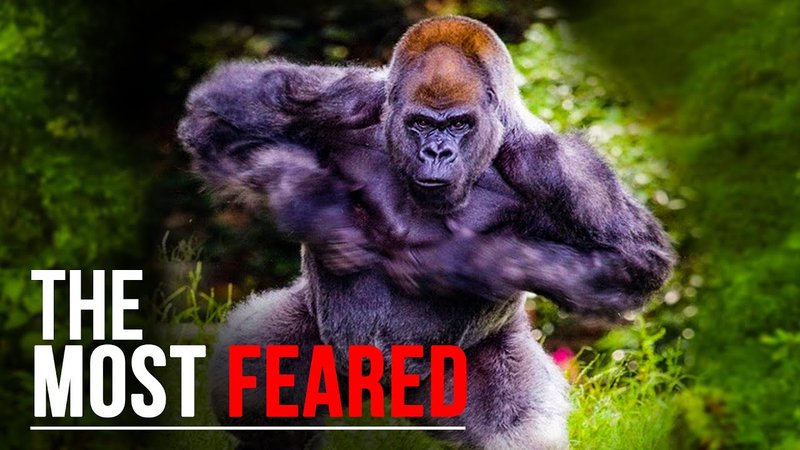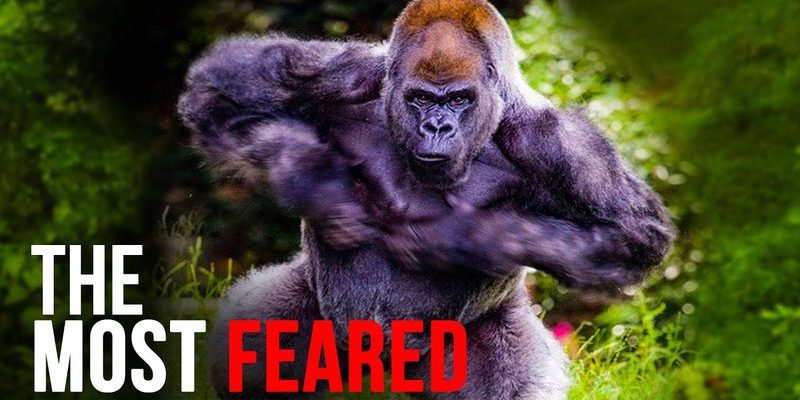
Now, let’s dive into the world of gorillas to understand what makes them tick. These creatures are often portrayed as gentle and shy in their natural habitat, yet they possess immense strength. So, where’s the line between peaceful and perilous? If you’re curious about gorillas and how they might react to humans in different situations, let’s explore this together.
Understanding Gorilla Behavior
To really get a grasp on whether gorillas can be dangerous to humans, it’s important to understand their behavior first. Gorillas are primarily *herbivorous*, feeding on a variety of leaves, stems, and fruits. They’re social animals living in groups called troops, usually led by a dominant male known as a silverback. Just like a family, these groups have their dynamics—some members are playful, while others are more serious.
Interestingly, gorillas communicate through a series of vocalizations, body postures, and facial expressions. They can often convey happiness, curiosity, and even displeasure. However, if they feel threatened or if their young are in danger, their demeanor can change drastically. Remember the last time you felt cornered or overly protective? This instinct isn’t much different for them. So, here’s the thing: a gorilla’s first reaction is often to retreat, but if it feels cornered, it won’t hesitate to defend itself.
When Are Gorillas Dangerous?
Gorillas are generally not predators and are usually calm and reserved in their natural environment. However, there are certain situations where gorillas can indeed become dangerous to humans. For instance, if a human inadvertently gets too close to a mother with her young, the gorilla may feel threatened and act aggressively to protect her offspring.
To put it simply, gorillas have a *fight or flight* response. In the wild, they might charge and display aggression with loud chest thumping or even charging at perceived threats. Imagine being in the passenger seat of a car that suddenly veers off the road: your heart pounds, and your instincts kick in. For a gorilla, that’s what happens when it senses danger.
Another scenario involves intrusions into their territory. As deforestation and human encroachment increase, gorillas may feel pushed into corners, leading to more encounters with humans. The risk of aggression often rises when they perceive humans as threats, which is why respecting their space is crucial.
Human Interactions with Gorillas
Human encounters with gorillas can happen in various ways, from wildlife parks to research facilities. Here’s where things can get tricky. In many cases, trained professionals interact with gorillas in a controlled environment, taking meticulous precautions. These experts understand the animals’ behavior and the signs of distress, helping to ensure everyone stays safe.
That said, if you’re a visitor at a wildlife park, it’s important to follow guidelines set by the staff. They know these animals best and can provide insights into safe ways to observe them. You wouldn’t want to put yourself in a situation where a gorilla feels threatened, right? Staying at a safe distance and respecting the boundaries laid out by professionals is key.
Unfortunately, not everyone realizes the potential dangers in close encounters. There are stories of tourists who get too close, trying to capture the perfect photo, only to end up in a panic when the gorilla reacts defensively. So, you might be wondering, how can we respect their space while still enjoying the experience? Keeping to designated viewing areas is a good start.
Conservation and Gorillas
Conservation plays a critical role in how gorillas interact with humans. With their populations declining due to habitat loss and poaching, conservation efforts aim to create safe spaces for them and reduce human-wildlife conflict. Initiatives like protected national parks help keep gorillas away from urban areas, thus lowering the chances of dangerous encounters.
Organizations often work tirelessly to educate the public about gorilla behavior and the importance of their preservation. Just think about it: if we understand them better, we can coexist peacefully. Imagine a world where gorillas roam freely without fear of encroachment. That’s a vision conservationists strive for.
Furthermore, responsible tourism can provide much-needed funding for these efforts. By visiting wildlife parks that prioritize conservation, you contribute to the safeguarding of gorilla habitats, ultimately decreasing the likelihood of dangerous interactions. It’s a win-win situation!
Gorilla Strength and Size
When thinking about gorillas, one of the first things that come to mind is their sheer strength and size. Adult male gorillas can weigh between 300 to 485 pounds and stand up to 6 feet tall when upright. Imagine going toe-to-toe with something that powerful! Even in non-aggressive situations, a gorilla’s strength is impressive and a bit intimidating.
Their muscular build allows them to climb trees and move through the dense foliage of their habitats with ease. However, it’s also this strength that makes their defensive instincts all the more concerning. Picture a bodybuilder suddenly getting ticked off—those muscles don’t just look good; they can pack a punch.
This incredible strength also plays into their social structure. A silverback uses his muscles to establish dominance within the troop, showcasing that they can be both social creatures and formidable opponents when necessary. By understanding these dynamics, you can appreciate the balance of power and gentleness that gorillas exhibit.
Safety Tips for Observing Gorillas
If you get the chance to observe gorillas in a wildlife park or during a guided trek, here are some safety tips to keep in mind to ensure a safe and enriching experience:
- Stay back: Always keep a safe distance. Follow the guidelines provided by park rangers or tour guides.
- Do not feed them: Feeding gorillas can change their natural behaviors and make them reliant on humans.
- Observe quietly: Loud noises or sudden movements can startle gorillas, making them feel threatened.
- Keep your camera low: If you’re taking photos, try to avoid pointing your camera directly at them. It can feel invasive.
- Pay attention to their body language: Signs of agitation can include chest thumping or staring directly. If you see these, back away slowly.
These easy-to-follow tips help protect both visitors and gorillas. Respect leads to safety, and safety leads to an unforgettable experience.
So, can gorillas be dangerous to humans? The answer is yes, but it’s nuanced. While they have the potential to act aggressively under certain circumstances, they are generally peaceful creatures. Their behavior is mostly driven by instinct and environment. Understanding how to respect their space and interact thoughtfully is crucial for a safe experience, especially as we continue to learn about and protect these magnificent animals.
Ultimately, gorillas remind us of the delicate balance between humans and nature. By appreciating them from a distance and supporting conservation efforts, we can ensure that these gentle giants thrive in their natural habitat—without posing a danger to us or themselves.

